FEATURED YAK: HOW TO PAY ATTENTION
Posted on
05/21/20
Author
Angelica Calabrese, Mekong Semester Instructor
I don’t know exactly what a prayer is.
I do know how to pay attention,
How to fall down into the grass,
How to kneel down in the grass, how to be idle and blessed,
How to stroll through the fields, which is what I have been doing all day.
Tell me, what else should I have done?
-Excerpt from The Summer Day, by Mary Oliver.
We had just finished dinner in my homestay, and were still sitting on the mat in the center of the main room. The communal bowl of sticky rice had been returned to the kitchen, as well as the bowls of delicately cooked mushrooms and vegetables, and the chicken stew. As I sat, eating a banana and attempting to chat with my host mother, I noticed the two little boys – my host nephews – running around outside with large headlamps flopping up and down on their heads. My host sister seemed to be wandering the house collecting empty water bottles, and her husband, too, seemed to be up to something. I made some hand gestures to my host mom, attempting to gather what they might be up to, and she responded in turn with hand gestures of her own – a motion with her hands and arms, as if to catch something, and a finger pointed in the direction of the rice fields. Kaohi bpai dai boah? Can I go? I asked. She nodded, shooing me towards my host sister, who was now standing outside of the door with a headlamp around her head, her two boys by her side. I hurried to find my own headlamp.
* * *
My host sister, her husband, and her two boys, Alek, 8 years old, and Alak, 3 years old, take the lead on this evening expedition; they are joined by my host cousin, a sullen 16-year old, two local girls, both 10 or 12 years old, and me. Each of us is equipped with a headlamp and an empty plastic water bottle. We emerge from a narrow path between houses onto the rice fields, and disperse, headlamps trained to the ground. I follow my sister, trying to figure out what we are looking for.
The rice fields are dry this time of year, the mud and earth cracked and the rice grasses chopped short, golden, flat and bent. The dry paddies are still marked by their mounded earth boundaries, roughly delineated squares of varying size. I see tiny frogs, smaller than the size of my pinky nail, leaping among the dry grasses, and spiders whose green eyes glisten in the light of my headlamp. But no one seems to pay any attention to these creatures. What are they looking for instead? I watch my sister’s circle of light rather than my own, trying to see what she sees.
Finally, she points, squats, deftly and silently snaps her hand over a flash of black. A cricket. She squeezes it from the earth and into the palm of her hand, slides open the cap of her water bottle, and tips it inside. We are hunting for crickets.
Equipped with the knowledge of what I should be looking for, I spread out. The swell of the uncaught cricket’s chatter fills the night, accompanied by the lilting babble of little Alak, my 3-year old nephew. The evening sky glows purple in the light from neighboring Thailand as our small circles of headlamp light spread across the cracked fields. Orion hangs in the sky above us.
The crickets are nimble and wily. They prance among the grasses, and nestle into the cracks that have spread across the earth, or delve into holes in the paddy mounds, carved by other insects and animals. I know what a cricket looks like by daylight, but that’s not what I’m looking for – in the dim light of a headlamp at night, a cricket looks black, a black dash glinting among the dry mud and grass. I catch one, and then another. My host cousin’s water bottle is half-full already, the crickets piled atop one another, squirming and chattering. But I am learning to look. I follow the low mounds that delineate the paddy borders, and catch a few more. I pluck them by their hind legs, and slide them into Alek’s water bottle, or Alak’s, sharing my goodies; they share theirs, too. I’m learning, from Alek and Alak, from the young girls, and from my once-sullen, now lively 16-year old cousin, how to pay attention – to the night, to the earth, to the grasses, to the crickets, to each other. Tell me, what else should I have done?
Over the course of our travels along the Mekong, I’ve been reminded, as I hope my students have also been reminded, how to pay attention. How to notice the small and curious details in the world around us – the black crickets in the grass; the white porcelain Virgin Mary statue perched atop a red and gold Buddhist shrine; my host father’s arm, tenderly wrapped around his grandson as they watch cartoons together.
How to pay attention to one another – to notice each person in their sorrow, and in joy. How to care for each other. And how to care for ourselves: paying attention to our minds, noticing our thoughts. These are things that no classroom, professor, or textbook can teach us. These are things we learn from a host mother, brother, or nephew, or from the earth, the grass, and the crickets. They are things we learn from each other, and from the world around us. If the Mekong River, if Cambodia, Laos, and China, if the communities that host us, love us, teach us, can leave us with anything, I hope that it might be this –
How to fall down into the grass,
How to kneel down in the grass, how to be idle and blessed,
How to stroll through the fields, which is what I have been doing all day.
Tell me, what else should I have done?

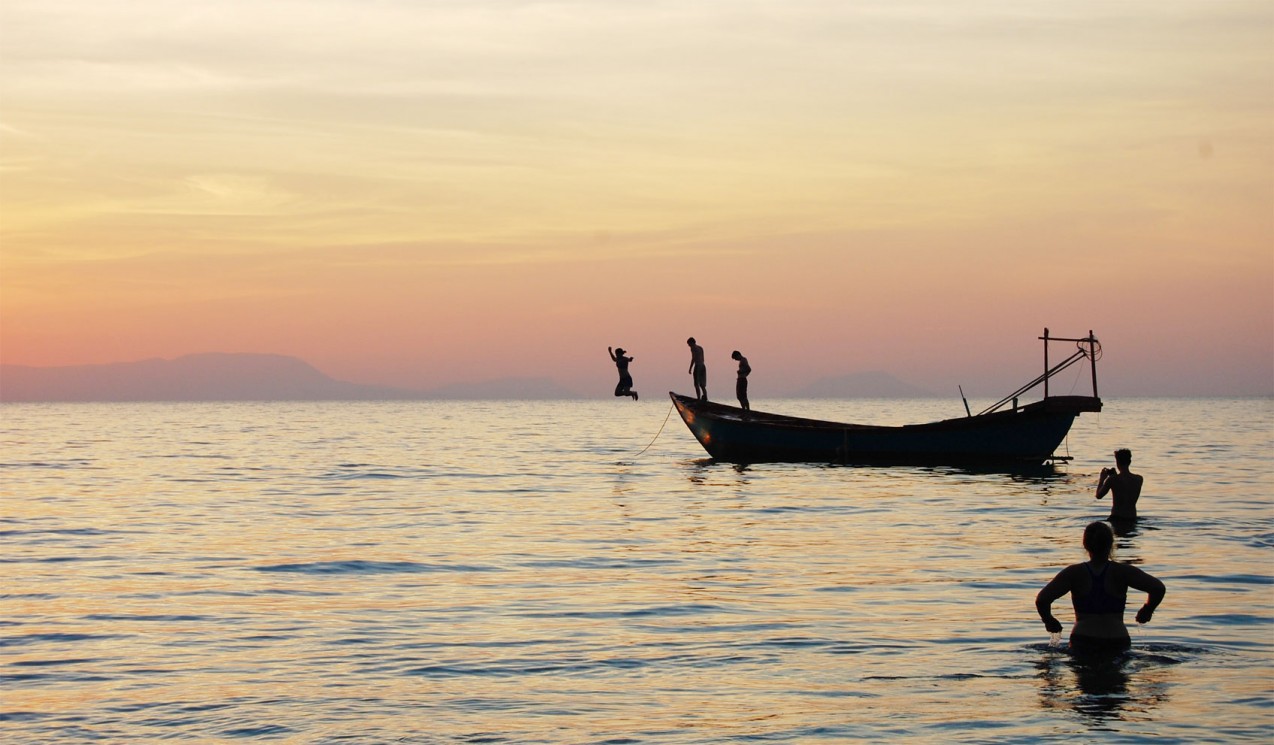
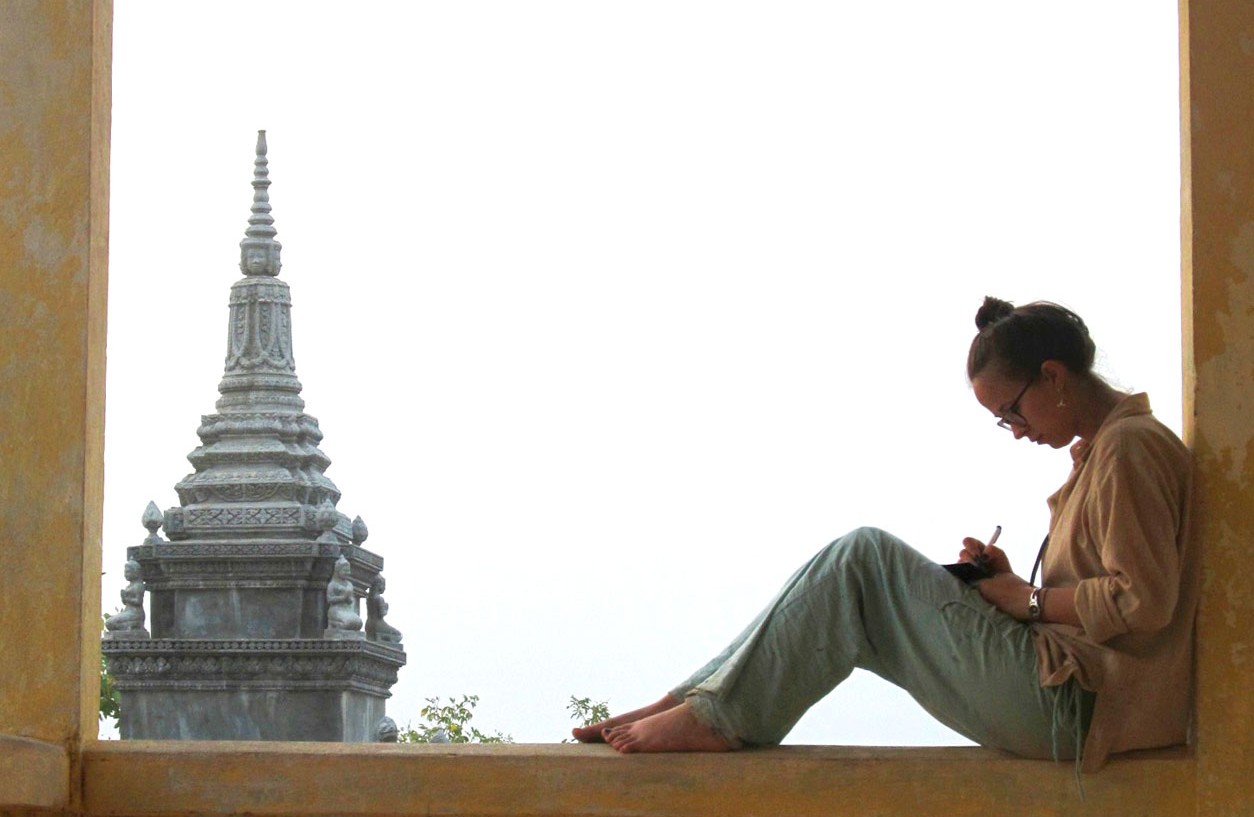
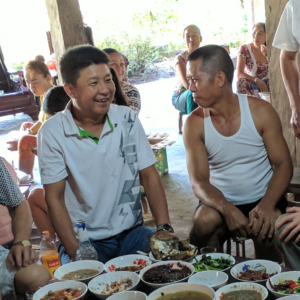
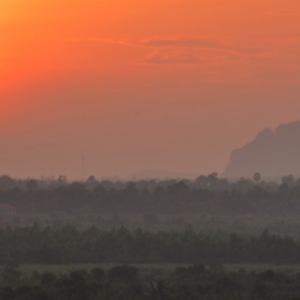
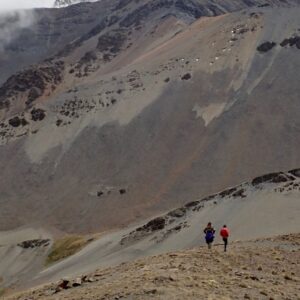
Leave a Comment